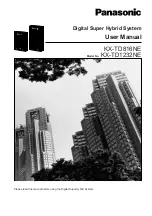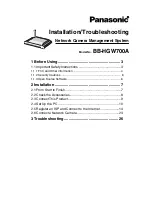
38
•
Option 2
Hold the nozzle and unscrew the nozzle head. Then
insert a screwdriver into the nozzle and position the blade in
ROGLQJWKHVFUHZGULYHU¿UPO\XQVFUHZWKHQR]]OH
001412
Figure 7. Dismantling, option 2
• Take out the nozzle at the back of the chamber and
disconnect the nozzle from the hose. The main pump can be
removed to make this operation easier. Disconnect the hoses
DQGWKHWZR¿[LQJVFUHZVXQGHUWKHSXPSVKHOI0RYHWKH
pump forward and lift it out.
•
$IWHUUHSODFHPHQWUHSDLUUH¿WLQWKHUHYHUVHRUGHU
&KHFNLQJ¿[HGQR]]OHV
This is inspected to prevent the nozzle from becoming clogged
with dirt and deposits, etc. Failure to perform the inspection can
result in poor cleaning results.
Unscrew the nozzle from the chamber and clean it inside and out.
Mount the nozzle back again.
&KHFNLQJQR]]OHDWWDFKPHQWVDQGKRVHFRQQHFWLRQVIRUWKHQR]]OHV
This is done to minimize the risk of leakage from the chamber and
from the hose system’s connections to the nozzles at the back
and on the side of the chamber. Failure to perform inspections can
result in leakage.
Check that the nozzles are properly attached to the inside chamber
wall. Tighten them if loose. For further instructions, see “10.1
Function and leakage inspection”.
6.3.5 Checking temperature sensors (2.4)
This inspection is performed to check that the temperature sensor
is working and that the lead-in on the top of the chamber is tightly
sealed. Failure to perform an inspection can result in inadequate
disinfection and leakage. If the temperature in the machine is off
by more than ± 1°C, the temperature sensor must be recalibrated.
For further instructions, see “10.1 Function and leakage
inspection”.
















































